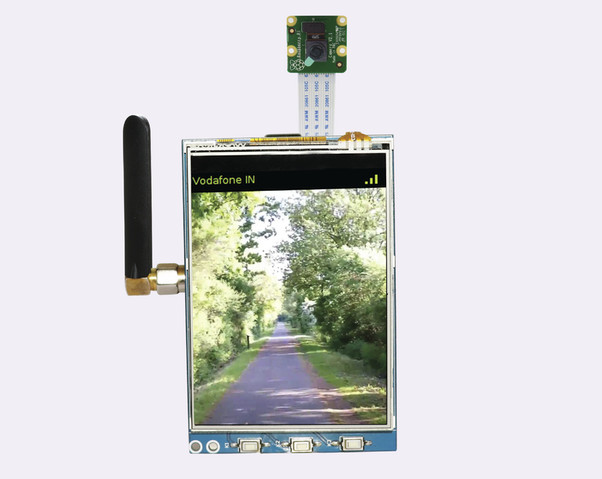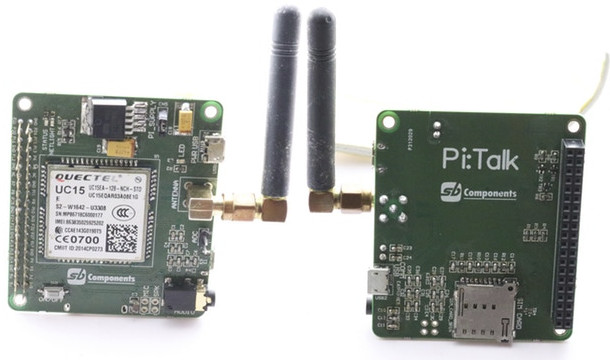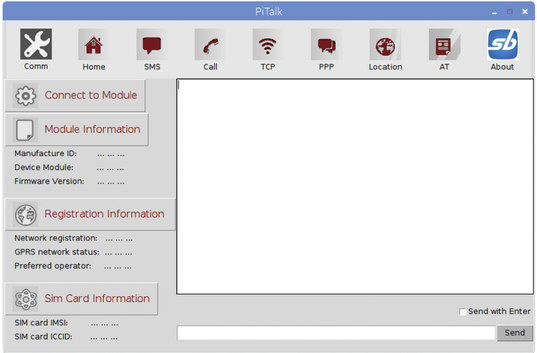The Raspberry Pi boards are used in a countless number of projects, and some of those turn one of Raspberry Pi boards into a (thick) smartphone powered by Linux. The first one was probably PiPhone based on Raspberry Pi 1 Model B, and other followed suit such as TyTelli based on Raspberry Pi Model A+, and more recently ZeroPhone powered, as its name implies, by Raspberry Pi Zero board.

PiTalk board specifications:
- Cellular Connectivity
- Quectel UC15 3G/2G UMTS/HSDPA and GSM/GPRS/EDGE module with up to 3.6 Mbps download, 384 Kbps upload
- SMA antenna connector
- Push push SIM card holder
- Voice, SMS and data support
- Audio – 3.5 mm audio jack, speaker and mic support via unpopulated headers
- USB – 1x micro USB port for comm., 1x micro USB port for power only
- 40-pin Raspberry Pi A+, 2/3, Zero/Zero W compatible header
- Expansion – 2-pin ADC header
- Misc – On/off switch; Status & “Netlight” indicators
- Power Supply – 5V via header or micro USB port

The board can be controlled with Python code, but the company did not provide any details at this stage. A PiTalk GUI interface to control the board will also be offered, and the Open Hardware and Open Software logo are shown on the Kickstarter page, but again no detailed information about that part.

PiTalk has launched on Kickstarter with a 10,000 GBP funding target. Rewards start at 47 GBP ($63) for PiTalk boad and an antenna, but if you need a kit, you’ll need to pledge 65 GBP ($87) and up starting with the 3.2″ LCD kit. Shipping adds 3 GBP to the UK, and 10 GBP to the rest of the world, and you can expect the rewards to ship in March 2018 if the project can be completed on time.
Via MickMake

Jean-Luc started CNX Software in 2010 as a part-time endeavor, before quitting his job as a software engineering manager, and starting to write daily news, and reviews full time later in 2011.
Support CNX Software! Donate via cryptocurrencies, become a Patron on Patreon, or purchase goods on Amazon or Aliexpress






It looks interesting if they get the software done. There is a lot to do there if they just put out the board, and expect someone in the “community” to finish it. Which means you get to most likely.
£110 + £10 shipping for the 5″ screen, which is what I’d probably want.
Looks like the power will also be an issue from what Jean-Luc mentioned.
There are already many past and present Pi Phone kits just google search.
When someone brings an LTE hat to the fore, and has VoLTE support, come tell me. X-D
Ditto
There is 4G http://www.instructables.com/id/PiAnyWhere-4G-LTE-Hat-for-the-Raspberry-Pi/
The price is just crazy. https://altitude.tech/product/4g-bit-uk-eu-4g-lte-hat-raspberry-pi/
@theguyuk
There are also others like:
Sixfab Raspberry Pi 3G-4G/LTE Base Shield V2: https://www.cnx-software.com/2017/10/20/sixfab-launches-raspberry-pi-3g-4glte-base-shield-v2-for-31-20/
OpenH QUASAR: https://www.cnx-software.com/2017/05/31/openh-pulsar-and-quasar-boards-add-4g-lte-cat-m1-or-cat-41-to-raspberry-pi-boards/#openh-quasar-raspberry-pi-hat-board
But maybe what @Nobody of Import wants is a complete kit with display and software support, as while he’s capable, he may not have the time to work on the software.
@cnxsoft
@theguyuk
… and none of the shields we’ve linked to appear to support VolTE.
@cnxsoft
Yes sadly so. I also know of ” The Pilot ” shield by Linkware also not VoLTE sadly.
Here is a easy read explanation of VoLTE, for anyone reading this and wondering what the acronym VoLTE means https://www.gsma.com/futurenetworks/technology/volte/
@theguyuk
Should say Linkwave not Linkware
@Nobody of Import
Nimbelink has a RPI Hat for their LTE (4G Cat4, Cat 3, Cat 1, and Cat M) modems. Check it out here: http://nimbelink.com/raspberry-pi/